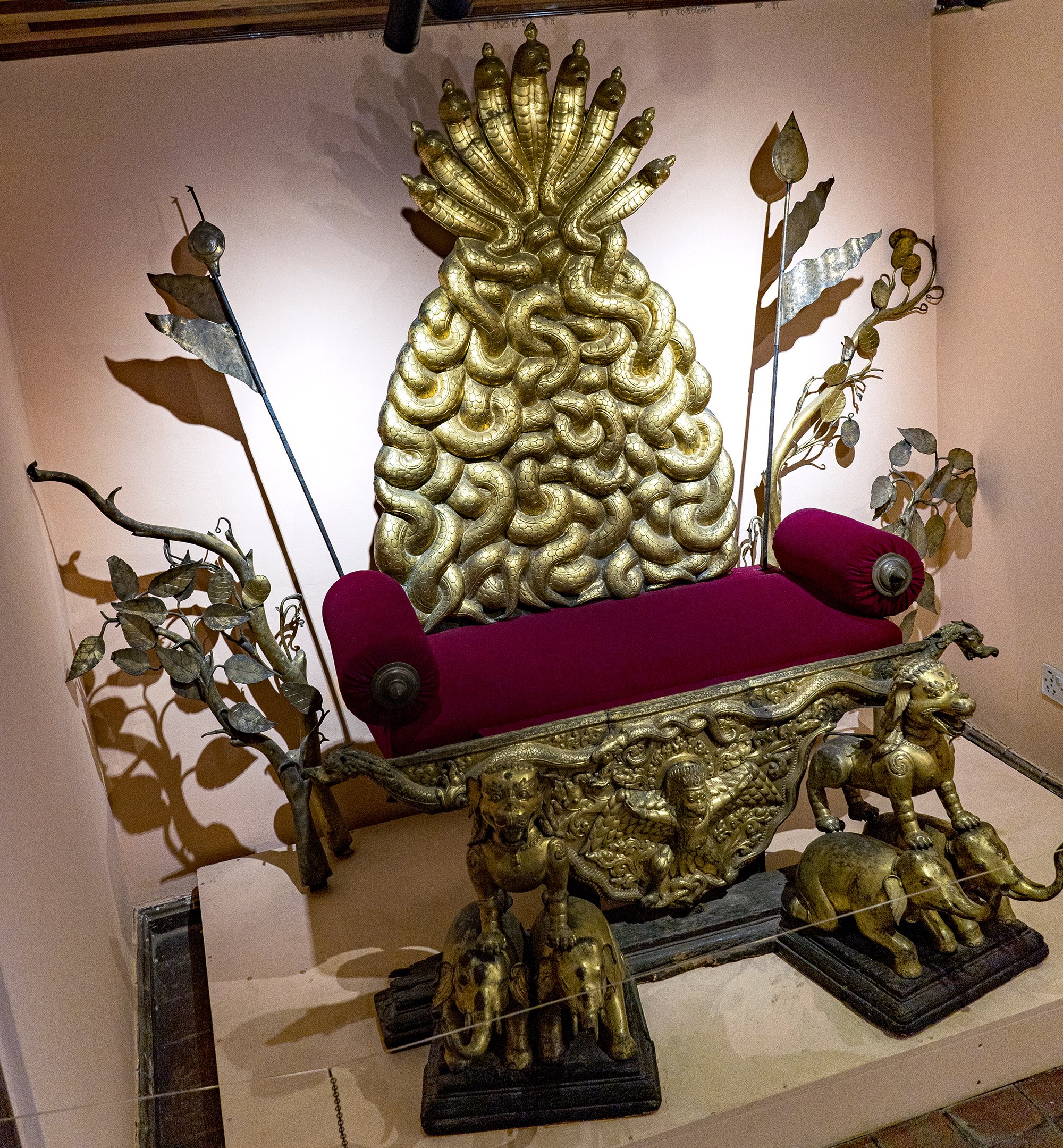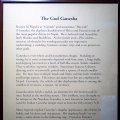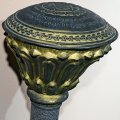Patan Museum (Nepal): photo 150
Photo 150 of 212 in Gallery: Patan Museum (Nepal)

Image title: Throne of the Patan Kings
Description of the photo
Throne of the Patan Kings [Nepal, 1666; Gilt copper, wood, modern upholstery]—
For more than a hundred years this was the royal throne of the kings of Patan. Like all the kings of Nepal they were considered to be incarnations of Vishnu. To convey this association the royal throne creates the illusion of the enthroned king as Vishnu seated on Garuda, the god’s mount, and accompanied by the multi-headed serpent Ananta/Shesha. Garuda, spreading his wings beneath the royal seat, is entirely a bird except for his human hands. He clutches in his talons a pair of serpents whose bodies surround him and end in a heart-shaped knot below. Above Garuda there is an additional pair of large serpents with mythical sea monsters (makara) heads, dragon like claws, and tails joined in a figure eight.
There is an amusing inscription in Newari engraved just beneath the seat which reads:
“May it be good. On Thursday, the eighth of the waxing moon of the lunar month Shravana, Nepal Era 787 [about August 8, 1666] His Majesty King Shrinivasa Malla was offered an alms bowl and a golden throne attached with Kadamba trees [Neulea orientalis]. Anybody can hire this throne on payment or two rupees to the families of copper-smith and carpenter. Let it be auspicious.”
According to oral history, the throne was presented to the Hindu king by a Buddhist resident o a nearby monastery. The king went there to receive the gift and sat upon the throne for the fist time. Like the adjacent Krishnalila painting, the throne also is displayed once a year at the Krishna temple in the royal square, a custom said to have been initiated by King Srinivasa himself.
Gallery information:
The Patan Museum is located on the Durbar square of Patan (Lalitpur/Lalitapura, Kathmandu, Nepal) which is associated Keshav Narayan Chowk (Keshavnarayan)—a form of Lord Vishnu. Being listed as a World Heritage Site, the whole of Durbar square is filled with exquisite temples, sculptures and other ancient structures, of which the ancient history history can be traced to the Malla Kings of Lalitpur. It is an important site for both Buddhism and Hinduism.
Photo details:
Date: 2019-12-02
Camera: SONY ILCE-6400
Exposure: 1/25
Aperture: f/5
ISO: 200
Focal length: 18mm
High resolution:
Download file
Size: 2.88 MB
Resolution: 2000 x 2159
© Photograph by Gabe Hiemstra.
License: CC BY-NC-ND 4.0

